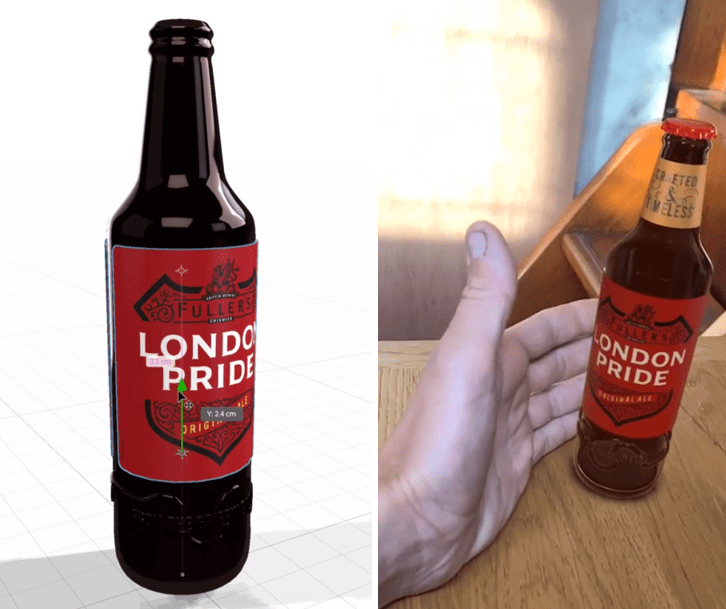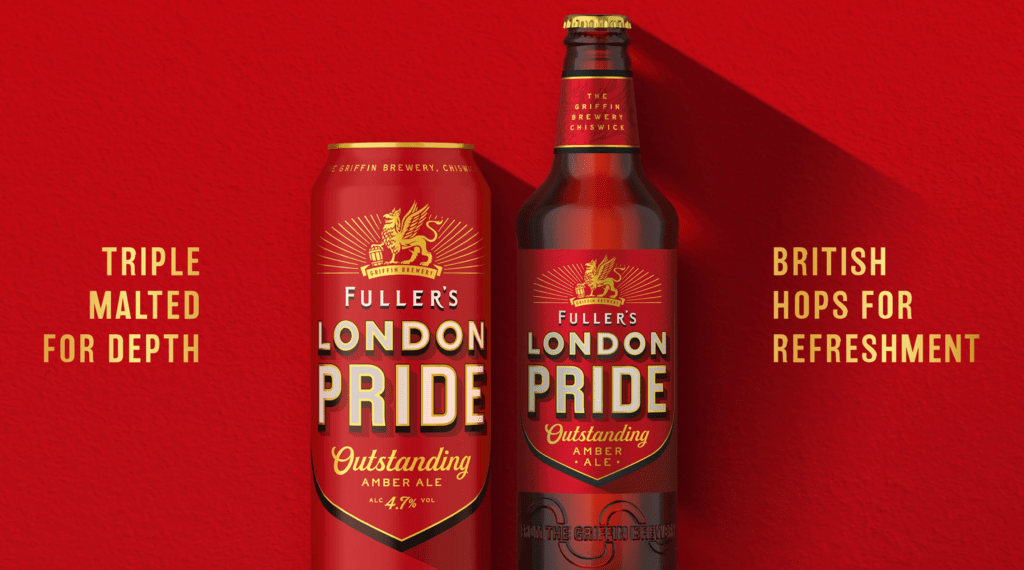The challenge
Asahi Europe and International is a global beer manufacturer. As custodians of some of the most admired beer brands in the world, being at the forefront of innovation is key – and this extends to the way Asahi approaches research.
Asahi partnered with Kadence International on a pilot designed to explore the applications of augmented reality to pack testing. The pilot was focused on one of Asahi’s flagship brands: Fuller’s London Pride. London Pride is already the capital’s number one ale, but as part of a strategic drive to bring the brand to more ale lovers nationally, Asahi wanted to test a new concept for the pack against the existing bottle design.
Asahi was particularly interested in using augmented reality for this purpose given the premium nature of the product. Augmented reality showed real promise as a way of testing premium elements of the pack at this early stage by allowing consumers to interact with life-like concepts in an in-home setting. This was particularly important given that the research took place during the Covid-19 pandemic.
What we did
We invited ale lovers from across the UK into an online community. From a commercial perspective our goal was to explore consumer reactions to both bottle designs to support the launch. From a research perspective, we wanted to evaluate the role of augmented reality in the pack testing process to understand any value it could bring. So how did we do this?
Respondents were split into two separate streams so we could compare the nature of the feedback from the different groups. Both groups saw both the existing bottle design and the new concept, but the crucial difference was in how these concepts were delivered. Whilst one stream saw static, 2D images, the other was given augmented reality models, built by the Kadence design team, that they could interact with using their mobile phones. We asked respondents in this stream to place the AR bottles in the space where they usually drink at home and record their screen as they talked through their feedback towards both bottles.

The impact of the research
We found that respondents in the AR stream were more likely to agree that they could really picture what the bottles looked like and this was evidenced in the feedback we gathered. Respondents in the AR stream were more likely to spontaneously comment on many of the critical details that make the bottle feel premium (e.g. the embossing of the glass), demonstrating the benefit of this approach for gaining organic feedback on key design choices. The AR approach also allowed respondents to view the bottles alongside competitor brands they had at home, resulting in useful live comparisons.
From a commercial perspective, the project enabled Asahi to gather rich feedback on both bottle designs and communicate this to customers, feeding into the launch of the new bottle as part of a brand identity refresh for London Pride.

From a research perspective, the study points to real potential for augmented reality as a tool for pack and concept testing, not just qualitatively but on a quantitative scale too, which we look forward to exploring in future.
Compared with those who evaluated the 2D static bottle images, the respondents who reviewed the AR concepts were much more likely to comment on some of those critical details that make the bottle feel premium … We found that they were spontaneously noticing these [details] and telling us what they liked about them … so it was more organic and allowed the elements that they noticed and cared about to rise to the surface naturally … As well as the benefits of gathering more detailed feedback generally, it also allowed us to get some really great quotes and video content for presenting to customers.
Global Insight Manager, Asahi Europe and International
Asahi Europe and International

 Global Insight Manager, Asahi Europe and International
Global Insight Manager, Asahi Europe and International

 Senior Marketing Executive
Senior Marketing Executive Sales & Marketing
Sales & Marketing General Manager PR -Internal Communications & Government Affairs
General Manager PR -Internal Communications & Government Affairs Vital Strategies
Vital Strategies
 Customer Intelligence Director
Customer Intelligence Director